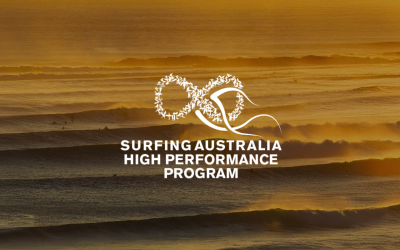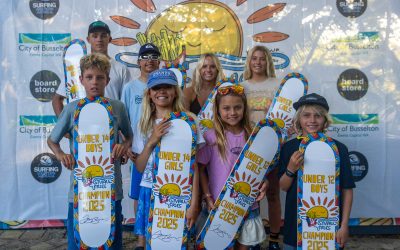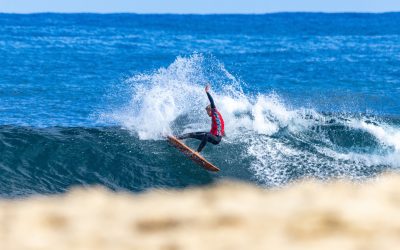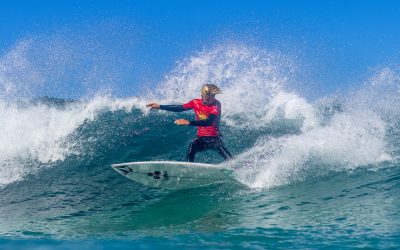In 2020, Surfing Australia launched the Paddle2Podium (P2P) project with the goal of maximising sprint paddle performance for female athletes in challenging wave conditions. This innovative program was pivotal in preparing our athletes for the Paris Olympics and has the potential to elevate the performance of all surfers within Surfing Australia’s talent pathway. We sat down with Joanna Parsonage, Surfing Australia’s former Research and Innovation Manager, to learn more about this groundbreaking initiative.
Firstly, how did the Paddle2Podium program come about?
Paddle2Podium was initiated about four years ago when it was announced that the Paris 2024 surfing event would take place at Teahupo’o in Tahiti. Our female surfers hadn’t surfed there for 16 years, so it was crucial to get them up to speed—literally. The feedback from the athletes was that they couldn’t paddle fast enough to optimise their performance in those waves.
The question then became, “How do we solve this problem?” That’s when we began collaborating with stakeholders like Griffith University, the Australian Institute of Sport, and the Queensland Academy of Sport to address this challenge. Over the last four years, it’s taken a tremendous team effort to break down the process into manageable stages.
“This had never been done in surfing before, especially not for female athletes”
– Joanna Parsonage, Surfing Australia former Research and Innovation Manager
Talk us through those stages?
In the first phase, we explored the importance of sprint paddling performance by speaking with coaches, athletes, and our performance support team. This phase was led by a postdoctoral research fellow from Griffith University, who helped bring the team together and defined everyone’s roles. We also brought on two PhD students, Sienna Gosney and April Denny, who have been instrumental to the project.
Sienna focused on analysing sprint paddling to identify the key characteristics that lead to superior paddling velocity. This had never been done in surfing before, especially not for female athletes. Sienna’s findings informed the second phase, which was led by April, who worked closely with Tommy Fraser Holmes 2x time Olympian (2012, 2016) and swim coach at Griffith University, to develop interventions to improve these characteristics and increase sprint paddling speed for our female surfers.
We implemented these strategies with our four Olympians, particularly focusing on our two female surfers. Tyler Wright, for example, spent about a month working with Tommy to improve her paddling technique. Her feedback was incredibly positive, noting that it significantly enhanced her efficiency and performance.
The final phase of the project is about sustaining these outcomes. April and Sienna are now leading efforts to integrate Paddle2Podium into our gym programs and level one surf coach courses. This way, our surf coaches can teach paddling techniques right from the start, ensuring long-term benefits from the project.
Tell us about the organisations that supported this program and what each contributed?
This was a unique collaboration between four organisations. Surfing Australia was the driving force, asking the critical questions and seeking to support our athletes. Griffith University played a major role, with Associate Professor Clare Minahan leading the project alongside us. The PhD students, Tommy Fraser-Holmes, and other academics from Griffith were crucial in informing and advancing the research.
We also partnered with the Queensland Academy of Sport, which provided valuable expertise, especially from their swimming biomechanics team. They also lent us special equipment, which was key since the project had a tight budget. Lastly, the Australian Institute of Sport, which oversees all national sporting organisations, supported us with their research and innovation department, providing the expertise we needed to achieve our goals.
You mentioned earlier that the research and its application happened simultaneously, which is quite unique. Can you expand on how this benefited the program?
The primary goal was always to support the athlete, specifically the female surfers preparing for Paris 2024. But we also wanted to ensure this research would have a lasting impact on the sport. I’m proud to say we achieved that. The simultaneous application of research meant we could see real-time improvements, which is often rare in such projects. Typically, there’s a delay between research and its practical application, but here, the impact was immediate.
What made this project particularly unique?
Two factors stand out. First, only about 6% of sports research focuses solely on female athletes. This project, although it did involve male surfers at some points, was heavily centred on female performance. Second, the collaboration between the four organisations was seamless, allowing us to leverage each other’s strengths and complete the project successfully.
How do you think this project has advanced women’s surfing?
The impact was clear at the Olympic Games when Tyler Wright highlighted in her post-interview how important the project was to her performance. That was one of the proudest moments for us. When a two-time world champion like Tyler acknowledges the value of the project, it resonates throughout the sport and inspires others to focus on improving their skills.
Can you touch on how this type of training, although initially focused on Tahiti, is beneficial for surfers in general?
Although the project was focused on Tahiti and Paris, its findings are applicable to all surfing conditions. We know that surfers spend about 55% of their time paddling, which, while not scored, is critical to their overall performance. By improving their paddling technique, female surfers can catch more waves during training, increasing their repetition and adaptation, which builds confidence and skill. This feedback has been echoed by the surfers themselves, who have noted improvements not just in sprint paddling, but also in their overall efficiency in the water.
A full recap of Paddle 2 Podium will be released on Surfing Australia’s youtube channel in October. Subscribe to surfingaustraliavids on YouTube and surfingaus on Instagram to stay across this and other surfing stories.

Credit: Ted Grambeau
Participation
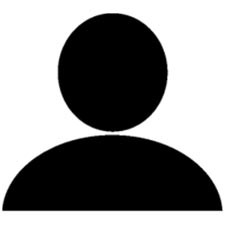
My Profile
Login to your profile or Sign up to our new Surfing Portal.

Memberships
Head to your Surfing Portal to purchase or renew memberships
Events & Courses
Head to your Surfing Portal to enter events and courses.


